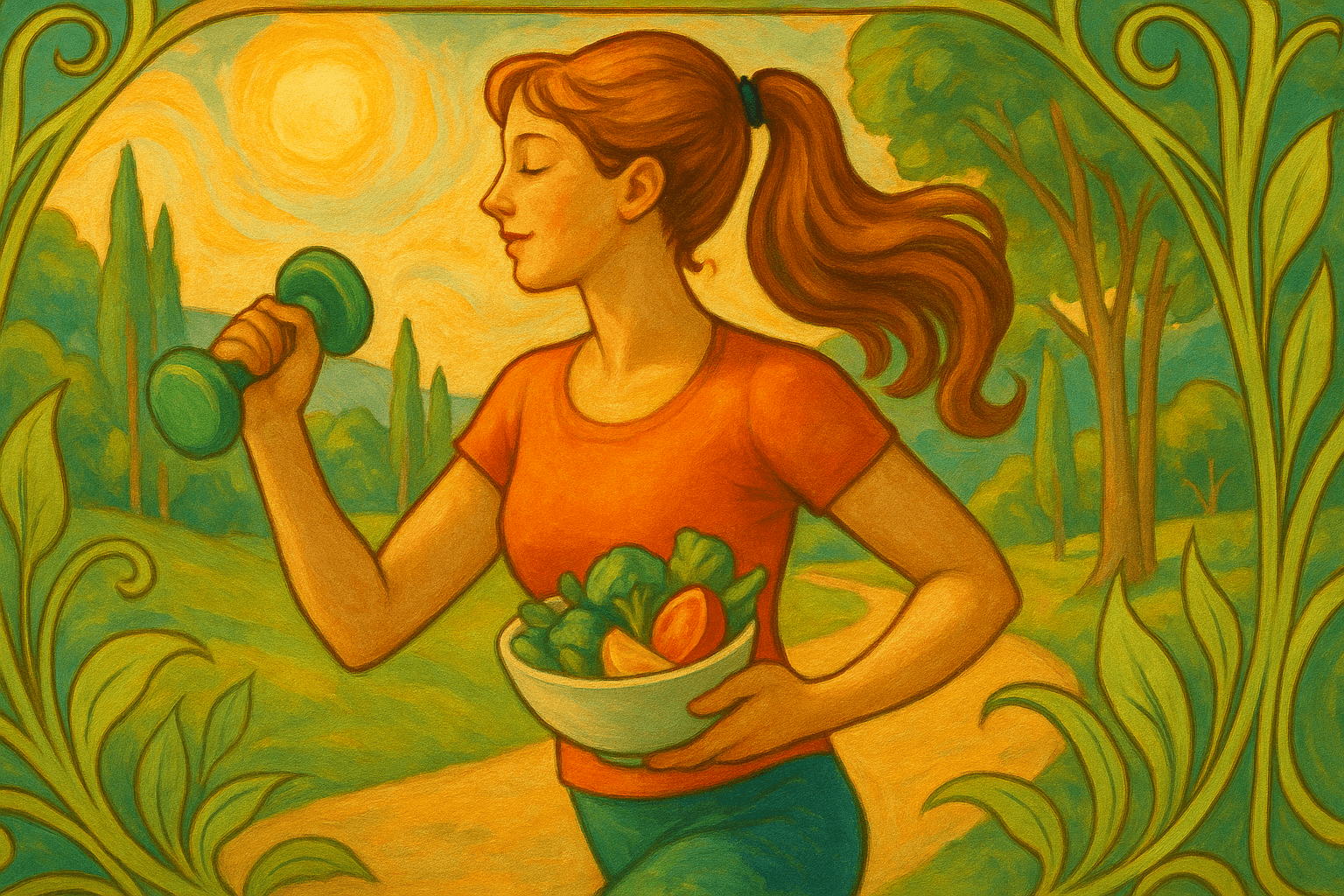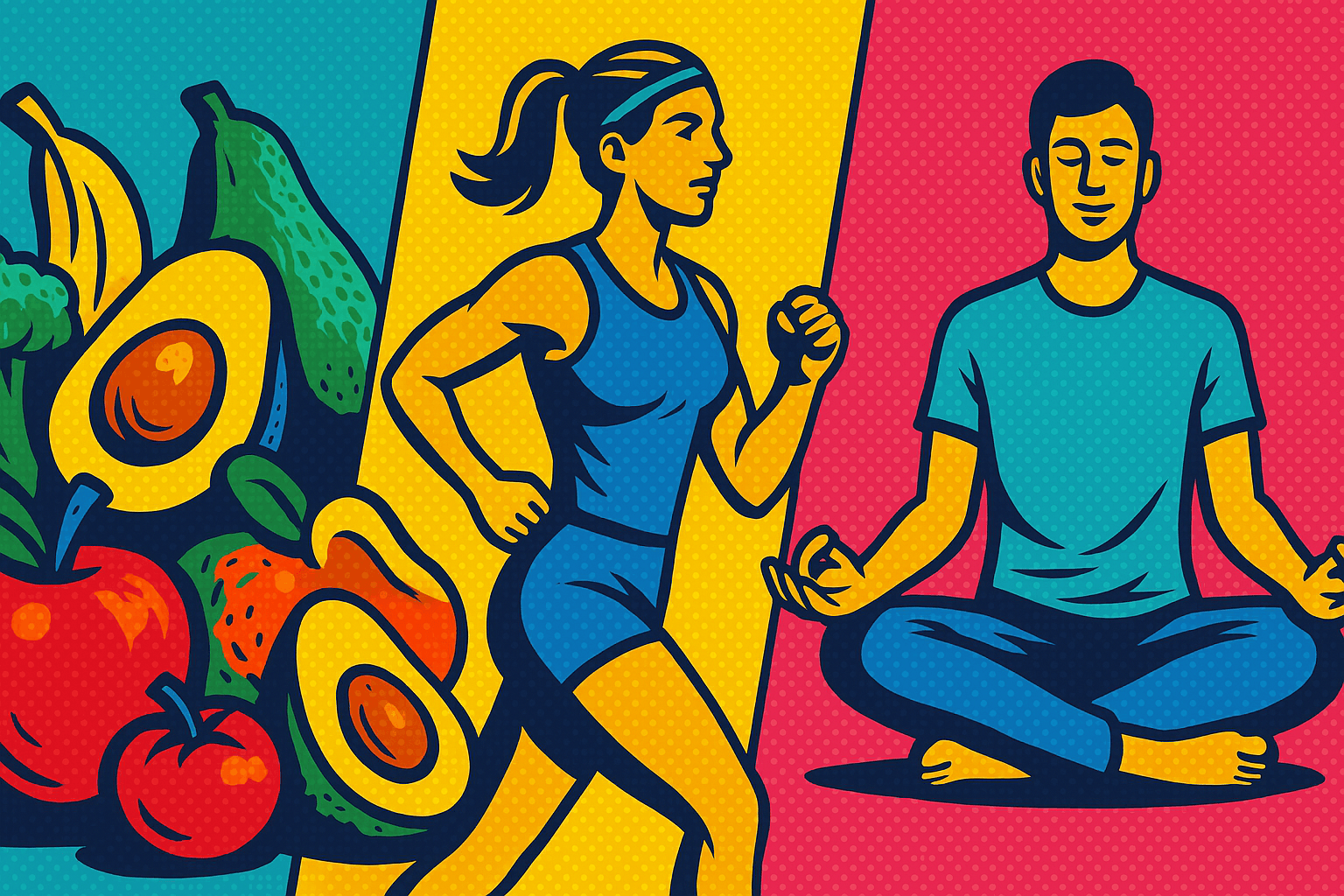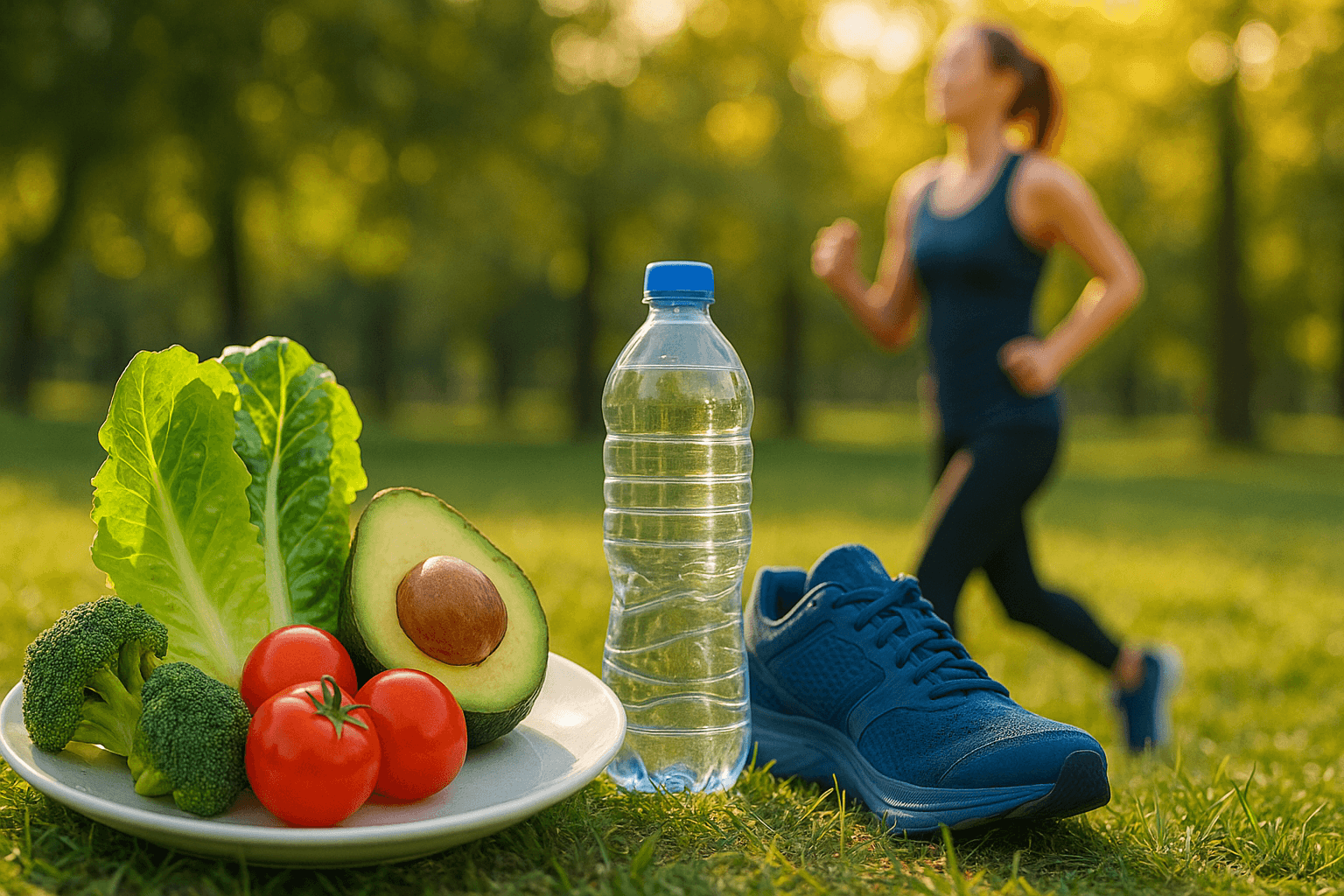Embracing a Healthy Lifestyle: Nutrition and Physical Activity as Pillars of Well-Being
Published on July 2, 2025

Nutrition: The Foundation
A balanced diet of whole foods — fruits, vegetables, whole grains, lean proteins & healthy fats — fuels the body, supports immunity, and reduces risk of chronic diseases like heart disease & diabetes
Antioxidant-rich, anti-inflammatory foods (berries, leafy greens, nuts, fatty fish) fight oxidative stress
Regular meal timing aids digestion, stabilizes hunger hormones & supports metabolic health
The Power of Physical Activity
150 min/week of moderate or 75 min/week of vigorous exercise recommended
Exercise improves heart health, builds strength, reduces inflammation & supports mood
Physical activity preserves muscle & bone density, reduces fall risk, boosts neuroplasticity & brain function
Endorphin release through movement enhances mental well-being
Types of Physical Activity
Aerobic: walking, running, cycling, swimming
Strength training: builds muscle & metabolism
Flexibility & balance: yoga, Pilates, tai chi
Functional movement: gardening, stairs, daily chores
Integrating Nutrition & Exercise
Balanced meals of carbs, protein & fats fuel workouts & recovery
Hydrate for stamina, focus & electrolyte balance
Post-exercise nutrition supports muscle repair & glycogen replenishment
Mental Health & Lifestyle
Chronic stress, anxiety & poor sleep undermine health goals
Mindfulness, meditation, and social connections support emotional resilience
7-9 hours of quality sleep essential for hormone balance, appetite control & recovery
Managing Stress
Daily meditation lowers cortisol
Deep breathing eases acute stress
Exercise acts as a natural antidepressant
Hobbies & creativity improve mood & cognition
Practical Tips for Healthier Living
Set achievable nutrition & exercise goals
Move regularly (walk, stretch, small activities)
Meal prep for healthy, convenient choices
Build a support network & celebrate milestones
Use trackers/apps for motivation
Practice gratitude & positive self-talk
Overcoming Barriers
Time? Batch cooking & simple recipes
Motivation? Join classes, find exercise buddies
Budget? Buy seasonal produce & bulk staples
Social? Communicate needs & seek support
Nutrition & Lifestyle Across Life Stages
Children/teens: prioritize nutrient-dense foods & active play
Adults: balanced diet, regular exercise, stress management
Older adults: protein for muscle, balance training, brain & bone-supportive nutrients
Pregnancy/lactation: meet DRIs, moderate activity supports maternal & fetal health
Community & Environmental Impact
Active transport, sustainable foods & community activities benefit individual health & the environment
Community gardens, walking clubs & local wellness programs build connections
The Science Behind Lifestyle Changes
Research shows combined diet + exercise interventions lower blood pressure, improve lipids, increase insulin sensitivity & reduce inflammation
Healthy lifestyles lower chronic disease risk & improve mental health
Lifestyle medicine recognizes diet & exercise as primary prevention & treatment tools
Long-Term Benefits
Healthy habits increase lifespan, independence, energy, cognition & mood
Promote sleep, digestion & immunity, creating a positive feedback loop
Support personal well-being & societal productivity
Final Thoughts
Healthy living is a lifelong journey; combining good nutrition, regular movement, mental well-being & social connection builds a strong foundation for vibrant health
Small, consistent changes make a big difference — choose habits you enjoy & can sustain








